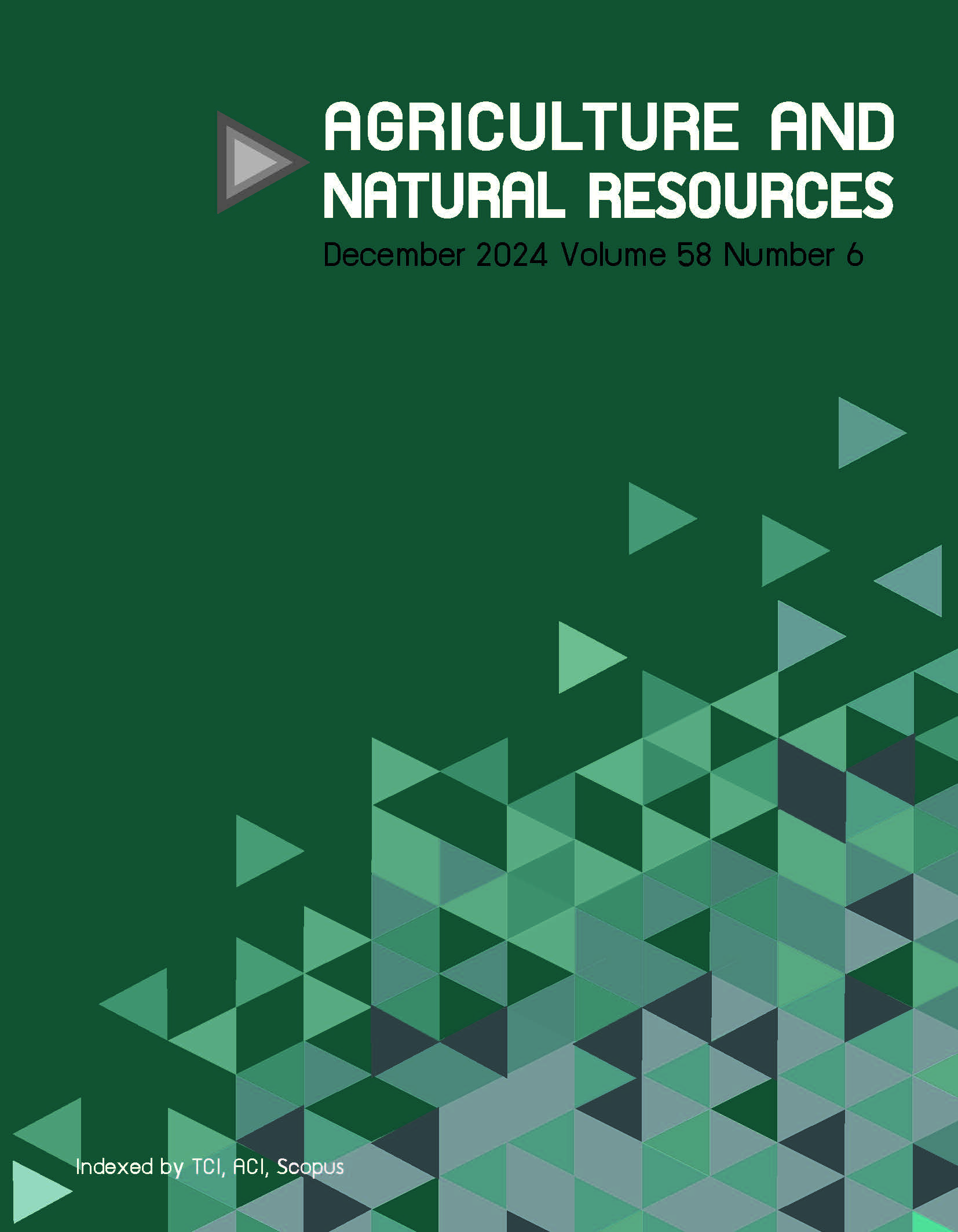Carbon storage and ecological characteristics of restored and natural mixed deciduous forests in western Thailand
Keywords:
Aboveground biomass, Carbon sequestration, Climate change, Forest restoration, Mining disturbanceAbstract
Importance of the work: Assessment of carbon storage and ecological characteristics in mixed deciduous forests is crucial for understanding its succession and mitigating global warming. Objectives: This study examine carbon storage and ecological characteristics between mining-disturbed and undisturbed mixed deciduous forests in Ratchaburi, western Thailand. Materials & Methods: 2022, twelve 20 × 20 m plots were established in natural and restored mixed deciduous forests in Ratchaburi Province, Thailand. Trees with DBH ≥ 4.5 cm were inventoried. Ecological parameters (density, basal area, IVI, diversity) and forest carbon stocks (aboveground biomass, soil carbon) were assessed. Results: A total of 658 trees, representing 67 species from 22 families, were identified. The composition differed between two forests, with a 48.06% similarity in species. The Shannon-Wiener diversity was 2.90 in the restored forest (RF) and 3.36 in the natural forest (NF). The basal area was 231.67 ± 71.15 m2/ha in the RF and 416.41 ± 261.59 m2/ha in the NF. Mean tree height was 10.51 ± 3.72 m in the RF and 13.97 ± 4.41 m in the NF. Tree density was 1,779.17 ± 729.97 trees/ha in the RF and 962.50 ± 147.27 trees/ha in the NF. The total carbon stock was higher in the NF (366.27 ± 76.51 MgC/ha) compared to the RF (194.14 ± 45.80 MgC/ha). Main finding: The restored forest showed lower carbon storage and ecological parameters, indicating long-term mining impacts. However, the restored forest still serves as a carbon reservoir, contributing to the reduction of atmospheric CO2 levels and preserving biodiversity after prolonged restoration.
Downloads
Published
How to Cite
Issue
Section
License
Copyright (c) 2024 This is an open access article under the CC BY-NC-ND license (http://creativecommons.org/licenses/by-nc-nd/4.0/), production and hosting by Kasetsart University Research and Development Institute on behalf of Kasetsart University.online 2452-316X print 2468-1458/Copyright © 2022. This is an open access article under the CC BY-NC-ND license (http://creativecommons.org/licenses/by-nc-nd/4.0/),
production and hosting by Kasetsart University of Research and Development Institute on behalf of Kasetsart University.







